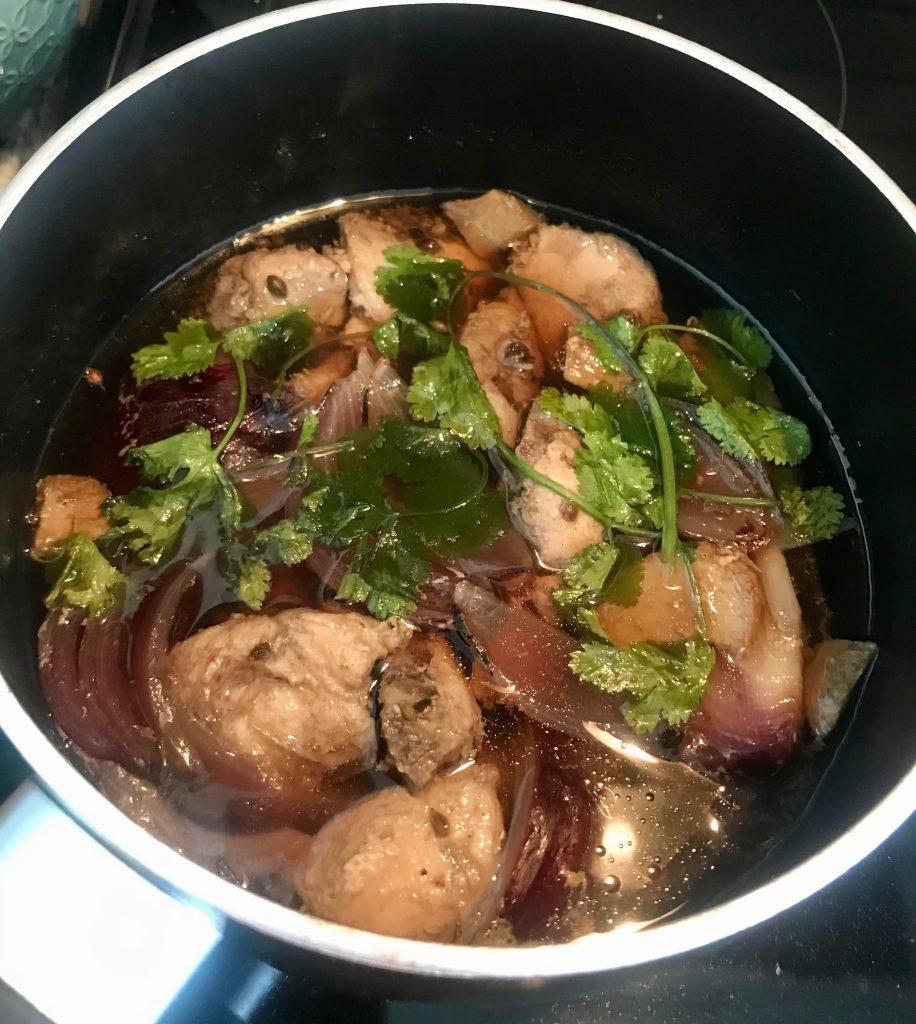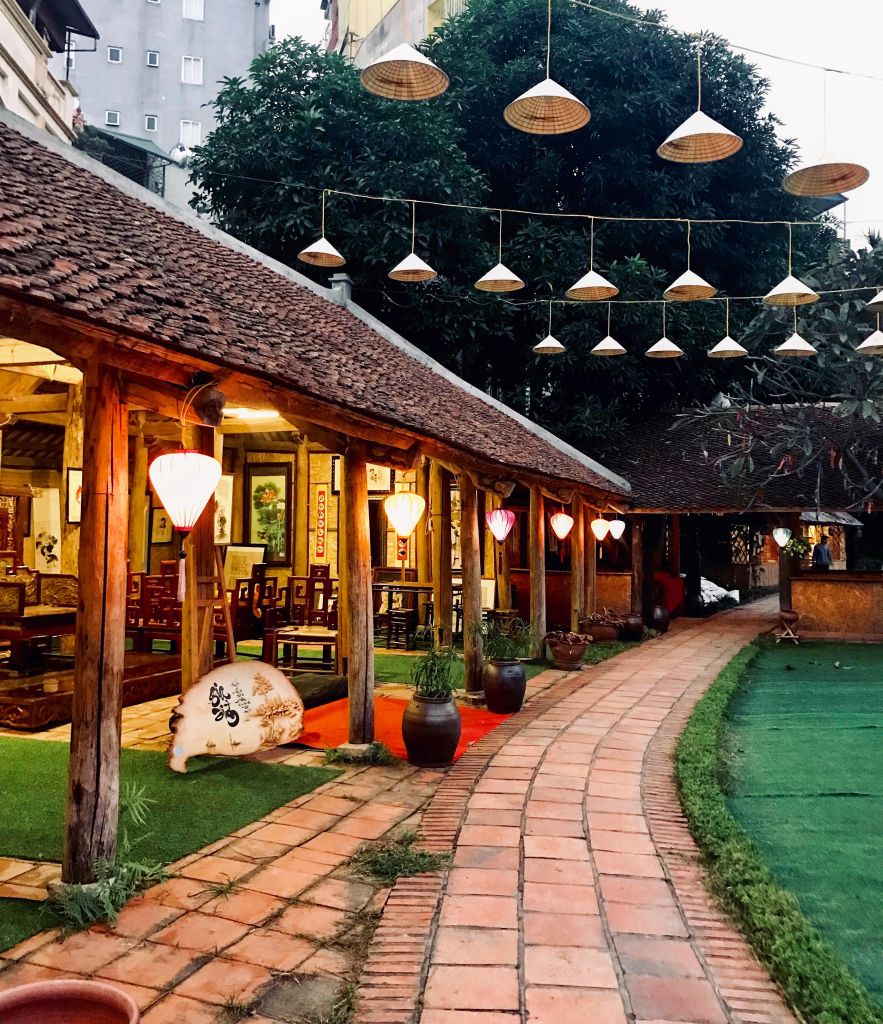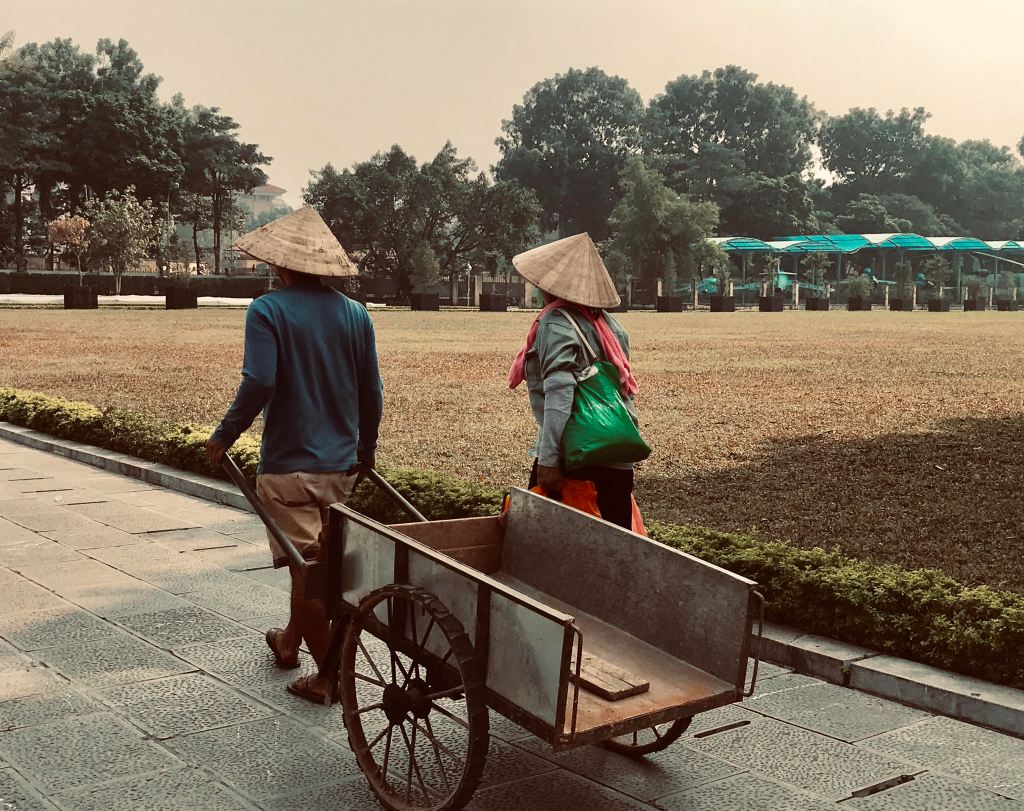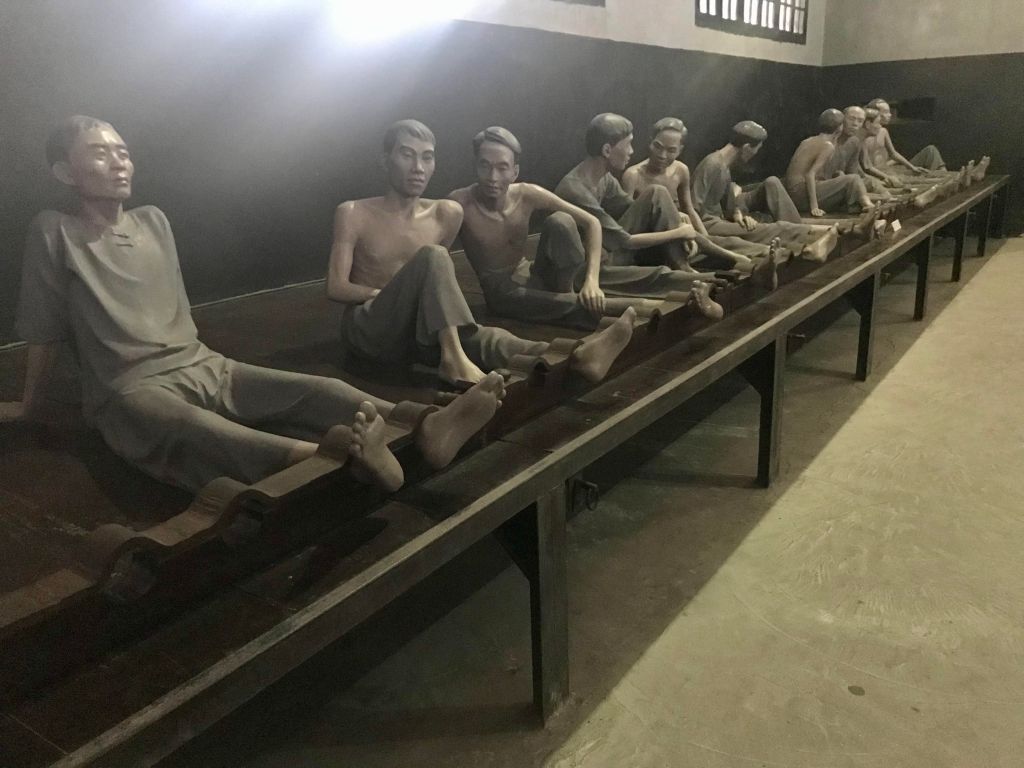Xin chào các bạn 🙂
Juicy succulent chicken pieces simmered in an aromatic broth served over rice noodles with an assortment of fresh herbs and condiments- the mighty phở (pronounced Fuh) is probably the most famous food export of Vietnam.
I don’t think there’s anybody who wouldn’t enjoy a fragrant bowl of warm phở on a cold winter night like today in Toronto. Although beef phở is more widely known, the chicken version is equally delicious and packed with complex yet delicate flavours.
I have always been fascinated by Vietnam and its culture, history, people and food. Ever since I read about the Vietnam War in my younger days, visiting the country was on my bucket list. This desire got stoked further on hearing stories from my dear Vietnamese friend Minh (my classmate from university days in Kuala Lumpur).
While visiting Hanoi, one of my favourite activities was to explore the local eateries and enjoy a bowl of phở. Other delicacies like bánh mì (savoury sandwich) or bún chả (meatballs) were also sumptuous, but it was the humble phở which resonated with me the most.
Vietnamese food is all about simplicity and minimal use of spices. The fresh herbs really stand out in making each dish flavourful- whether it’s bún thịt nướng (cold rice-vermicelli noodles with grilled meat) , fresh spring rolls or bún bò xào (noodle salad).
The street-side stalls are often packed in the mornings with people sitting on plastic stools enjoying a comforting bowl of phở before work.
Although phở might look really simple, it’s a work of art in a bowl. Phở teaches you balance. The zing from lime, the piquant fish sauce, freshness of herbs, spicy kick from the red chilies and sriracha, everything is adjusted in the right proportion to create the perfectly balanced umami rich dish 🙂
Before I share the ultimate recipe of mouthwatering chicken phở, here are some precious snippets from my Hanoi and Halong Bay trip two years ago.



Time for some food 😀
We all need a holiday after this Covid nightmare is over and hopefully we will all travel again soon. Till then keep planning and keep dreaming 🙂
Chicken Phở (Phở Gà) Recipe:
Ingredients (for 2 people):
Boiled rice noodles (for 2)
For the broth:
1 large onion, halved (unpeeled)
1 two-inch piece ginger (unpeeled)
1 large cinnamon stick
2 star anise
1/2 tsp fennel seeds
1/2 tsp coriander seeds
6 cloves
Few fresh coriander/ cilantro sprigs
3 tbsp fish sauce (you can add more if you like)
350-400g bone-in chicken
Salt to taste
Sugar to taste
For the topping/ garnish (the quantities are according to my preference, you can adjust as per your taste):
3 tbsp crispy fried shallots (or onions)
1 sliced Thai red chilli
Few sprigs of fresh coriander/ cilantro
8-10 fresh Thai basil leaves (or normal basil leaves if you don’t have Thai basil)
2 tbsp lime juice (or lemon like I used)
2-3 tbsp chopped spring onions
2 tbsp bean sprouts
Sriracha sauce according to taste
Few important tips:
Always use bone-in chicken for maximum flavour.
Char the veggies welly well.
Remove scum from time to time gently.
Adjust the quantities of herbs and condiments according to your taste. There is no fixed rule.
Let the broth simmer for at least 1.5 hours or more. Don’t cover the lid completely. Initially partially covered, later on simmer uncovered.
Method:
Heat a deep bottomed pot and roast the onion and ginger face down on medium heat. Make sure you don’t peel them. Continue to turn them with a tong for even charring.
When they get slightly charred, add the cinnamon, star anise, fennel and coriander seeds. Dry roast them for some more time until the spices become fragrant and the onion and ginger pieces are nicely charred.
Take out the ginger and onion. Peel the outer skin of the onion and roughly chop in 3-4 pieces to release more flavour into the broth. Also chop the ginger into smaller size as shown below. Add them back in the pot.

Throw in the chicken pieces and add enough water in the pot to make a good broth for two. Add salt, sugar, fish sauce and coriander sprigs and let the broth simmer on low heat (partially covered) for at least 1.5 hours. The longer the better!
Scoop out the scum that rises to the surface with a ladle gently without disturbing the simmering broth, from time to time.

Make sure that every time you scoop out some scum, you dip the ladle into a bowl of clear water before scooping out again. This will ensure your broth doesn’t become cloudy.
Meanwhile prepare your rice noodles according to package instructions, but don’t cook it too far ahead in time as they tend to get sticky if left out for a long time.
Also prepare the crispy shallots by frying 3 finely chopped shallots on low-medium heat in a wok. Drain and keep aside on a paper towel.



After 1.5 hours, you will notice that the broth is mostly clear.

Now remove the chicken and let the broth continue to simmer. Once slightly cool, tear the chicken pieces with your hand roughly instead of chopping, for that rustic street-side feel.
Strain the broth and adjust the seasoning. Remember to keep the broth slightly on the saltier side because it will eventually get diluted when noodles are added.
Time to assemble the phở !
In a bowl, take some of the boiled rice noodles, top it up with chicken and some chopped spring onions. Add enough broth so that it covers almost the entire bowl.
Throw in basil leaves, coriander leaves, chopped Thai red chilies, fried shallots, bean sprouts, a generous squeeze of lime and a squirt of sriracha*.
*Adding sriracha in the phở is often debated because it was never really used traditionally. But eateries now serve dollops of sriracha and hoisin sauce on a small flat dish to be used to flavour the meat and herbs for the phở. I personally don’t mind a small squirt of the hot sauce in my pho as it brings out all the flavours beautifully and elevates the taste but you may skip using it. Just keep some with you on a small plate and use as you please.

Serve hot and enjoy!


































